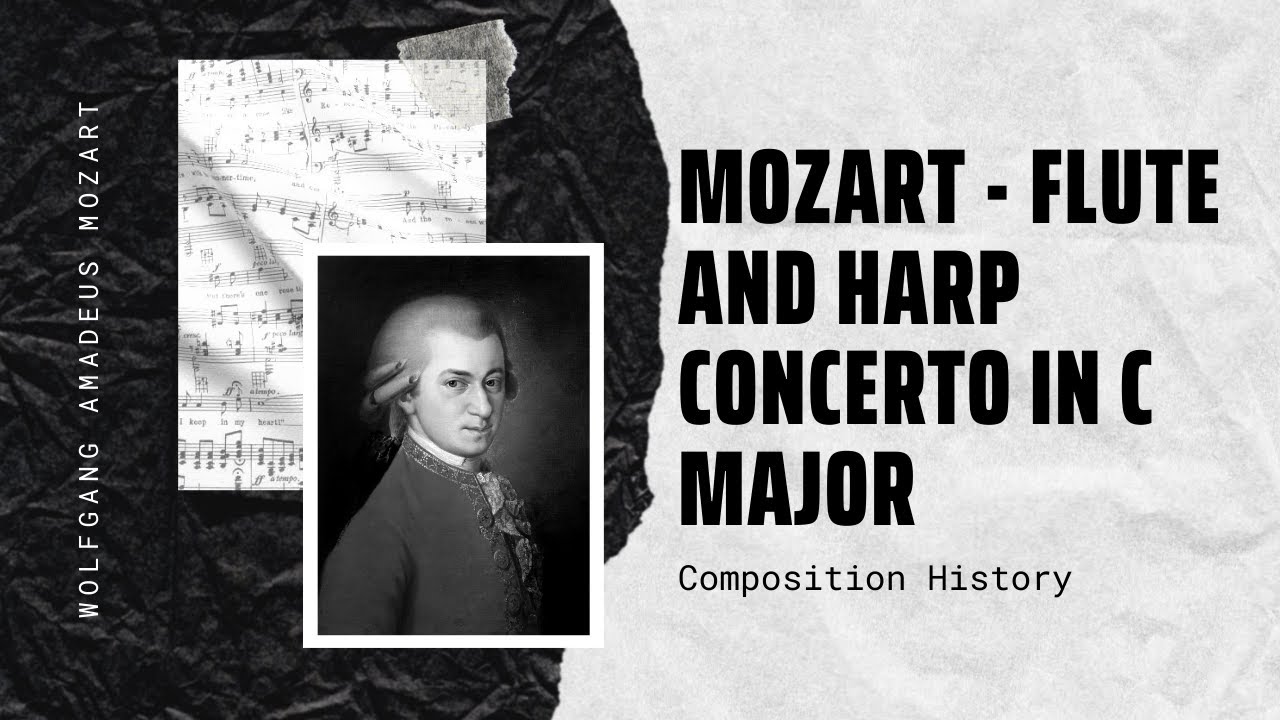Wolfgang Amadeus Mozart – Flute and Harp Concerto in C major
The Concerto for Flute, Harp, and Orchestra in C major, K. 299/297c, is a concerto by Wolfgang Amadeus Mozart for flute, harp, and orchestra. It is one of only two true double concertos that he wrote (the other being his Piano Concerto No. 10; though his Sinfonia Concertante for Violin, Viola, and Orchestra could just as well be considered a “double concerto”), as well as the only piece of music by Mozart for the harp. The piece is one of the most popular such concertos in the repertoire, as well as often being found on recordings dedicated to either one of its featured instruments.
Mozart wrote the concerto in April 1778, during his seven-month sojourn in Paris. It was commissioned by Adrien-Louis de Bonnières, duc de Guînes (1735–1806), a flutist, for his use and for that of his eldest daughter, Marie-Louise-Philippine (1759–1796), a harpist, who was taking composition lessons from the composer, at the duke’s home, the Hôtel de Castries. Mozart stated in a letter to his father that he thought the duke played the flute “extremely well” and that Marie’s playing of the harp was “magnifique”. As a composition student, however, Mozart found Marie thoroughly inept. The duke (until 1776, the comte de Guines), an aristocrat Mozart came to despise, never paid the composer for this work, and Mozart instead was offered only half the expected fee for the lessons, through de Guines’ housekeeper. But he refused it. (For his tutoring, Mozart was owed six Louis d’or.) Little is known of the work’s early performance history, though it seems probable that father and daughter played it first.
In the classical period, the harp was still in development, and was not considered a standard orchestral instrument. It was regarded more as a plucked piano. Therefore, harp and flute was considered an extremely unusual combination. Currently, there is much more repertoire for a flute and harp duo, especially without orchestra. Much of this repertoire was written by composers in the nineteenth century. Mozart’s opinion of the harp, however, was perhaps dubious at best, for he never wrote another piece that employed it.
Mozart quite likely composed this work with the duke’s and his daughter’s particular musical abilities in mind. He probably composed the majority of this concerto at the home of Joseph Legros, the director of the Concert Spirituel. Monsieur Legros had given Mozart the use of his keyboard in his home so that he could compose. (Mozart perhaps also composed part of the concerto at his second Paris apartment, which was on the rue du Gros Chenet.)
The piece is essentially in the form of a Sinfonia Concertante, which was extremely popular in Paris at the time. Today, the concerto is often played by chamber ensembles, because it is technically and elegantly challenging for both the solo instruments it calls for. It is also often played by orchestras to display the talents of their own flutists and harpists.
The harp part appears to be more like an adaptation of a piano piece than an original harp part; this is especially evident in the patterns of five and ten notes throughout all three movements which would not fall under the fingers as easily for a harpist, as the fifth fingers are typically not used, though they were considered part of early harp technique. There are no full, rich glissandi, and although there is counterpoint in the harp part, it does not typically include lush chords. Mozart did not include any cadenzas of his own, as is normal for his compositions. Alfred Einstein claims that Mozart’s cadenzas for this work were lost. A few popular cadenzas are often performed, such as those by Carl Reinecke, but many flutists and harpists have chosen to write their own. André Previn has also written cadenzas for this piece.
#MusicHistory
#ClassicalMusic
#Mozart

Comments are closed